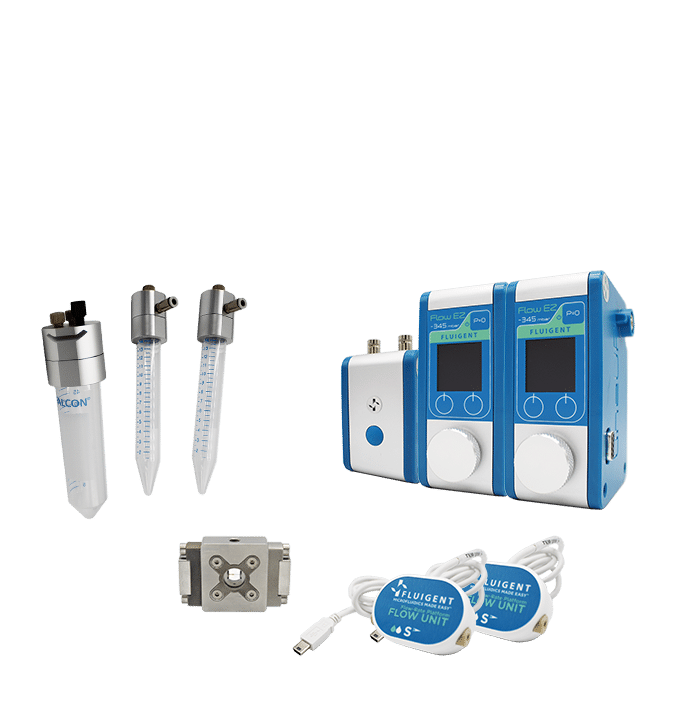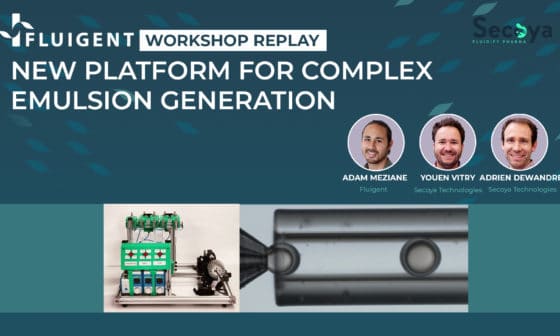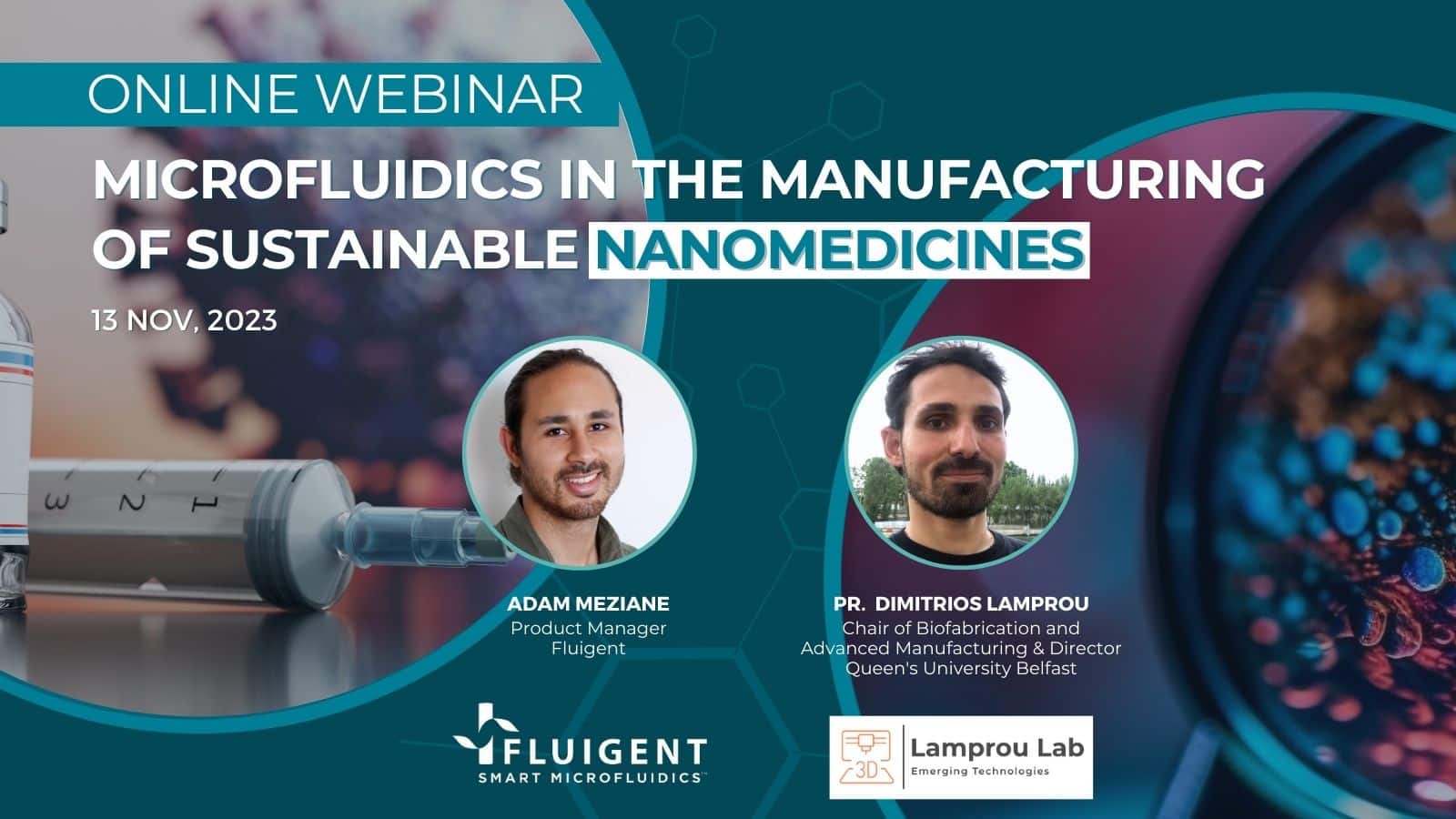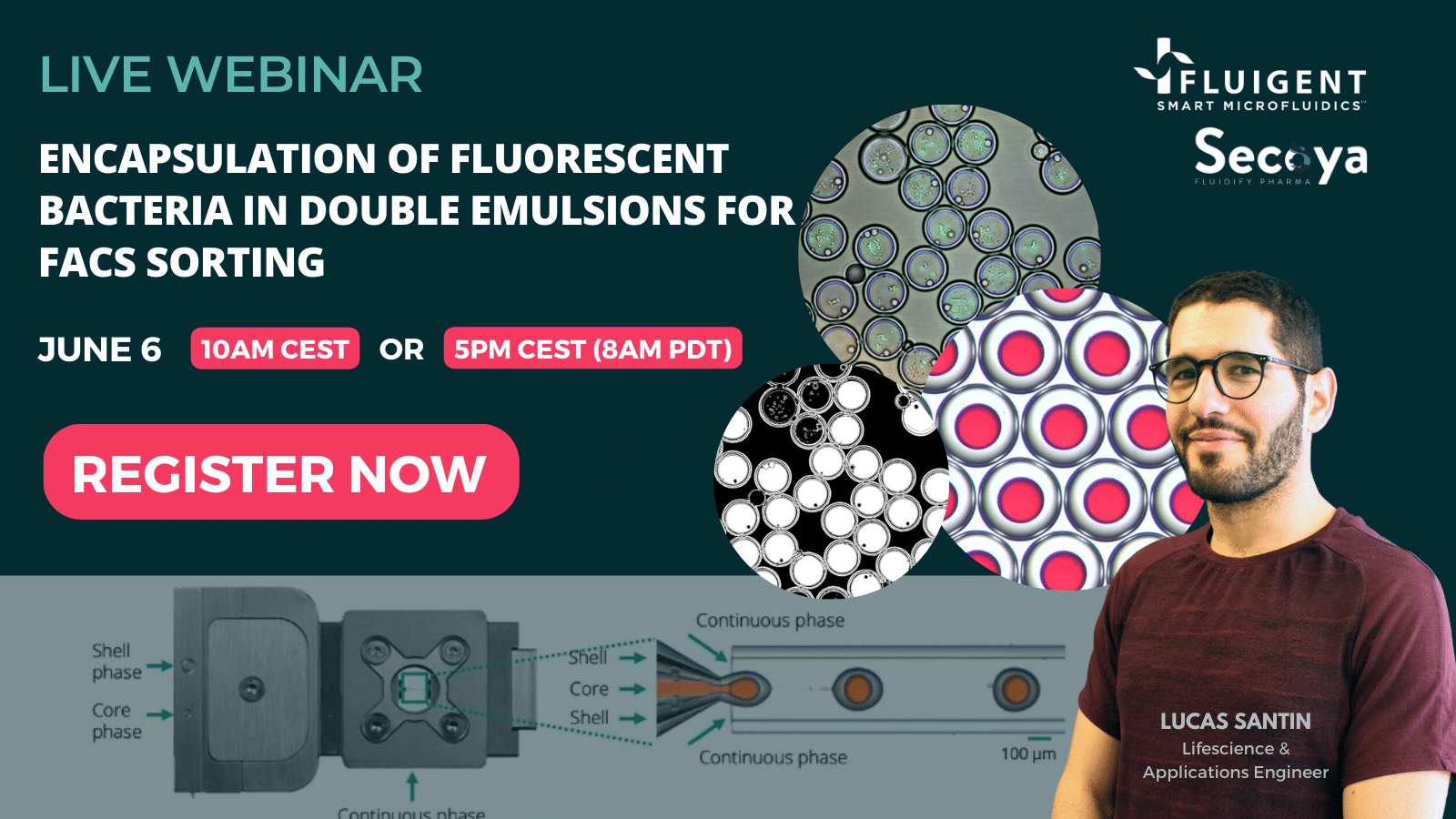Webinar - Polymerization of microfluidics-produced liquid crystal double emulsions for making wavelength and polarization-selective retroreflectors
Overview:
By combining the exquisite control of microfluidic double emulsion production with the self-assembly of liquid crystals, spherical shells with peculiar optical properties can be produced at high throughput and excellent reproducibility. In this webinar by the Experimental Soft Matter Physics (ESMP) group at the University of Luxembourg in collaboration with Fluigent, we will demonstrate, first, that the liquid crystal shells form a rich and intriguing platform for innovative photonics research.
Second, we show that polymerization of the shells into solid spheres turns them into retroreflectors that give omnidirectional selective reflection of circularly polarized light in a wavelength window that can be tuned from the near infrared (near-IR), throughout the visible spectrum, to the near ultraviolet (near-UV). These selective retroreflectors are incredibly useful, opening a plethora of application opportunities over a vast range of societally and commercially relevant fields, from anti-counterfeiting to robot guidance and Augmented Reality support to improved supply chain transparency and traceability.
In this webinar, you will:
✅ Be introduced to the amazing photonics of cholesteric liquid crystals and how their self-assembling behavior aligns perfectly with microfluidics;
✅ Learn about the interesting and useful consequences of photopolymerizing asymmetric shells around an incompressible liquid core;
✅ Be inspired by the diverse opportunities to apply the solid spheres created by polymerizing cholesteric liquid crystal shells;
✅ Find that all equipment and materials required to make these peculiar selective retroreflectors are commercially available, making it very easy to get started making your own cholesteric spherical retroreflectors.
Agenda:
• Introduction to cholesteric liquid crystal shells and why they are so interesting, from a fundamental science point of view and from an applied point of view (ESMP).
• Description of how cholesteric spherical retroreflectors are made, from microfluidic shell production to polymerization and washing (ESMP).
• Introduction to the Raydrop platform for making multiple emulsions with high degree of control and excellent reproducibility at high throughput (Fluigent)
• Assessment of the potential of the Raydrop platform and its advantages compared to other solutions for multiple emulsion production, from the point of view of making cholesteric liquid crystal shells (ESMP).
• Q&A.
Date: Thursday, April 28th at 10am CEST (4pm CST, 8pm AEST)
PLGA Microparticles Synthesis
When employing PLGA as a carrier for active pharmaceutical ingredients, ensuring the production of highly monodispersed particles is crucial for consistent drug release. Achieving a superior level of monodispersity is facilitated by utilizing the RayDrop, developed and manufactured by Secoya. The predominant production method for PLGA microparticles is solvent-based and may involve the use of potentially hazardous solutions. Ethyl acetate is the preferred solvent due to its enhanced biocompatibility compared to conventional solvents like dichloromethane.
Explore the application note to understand how the PLGA microparticle production pack enhances reproducibility and significantly advances monodispersity (CV < 2%) in comparison to alternative methods available in the market.



